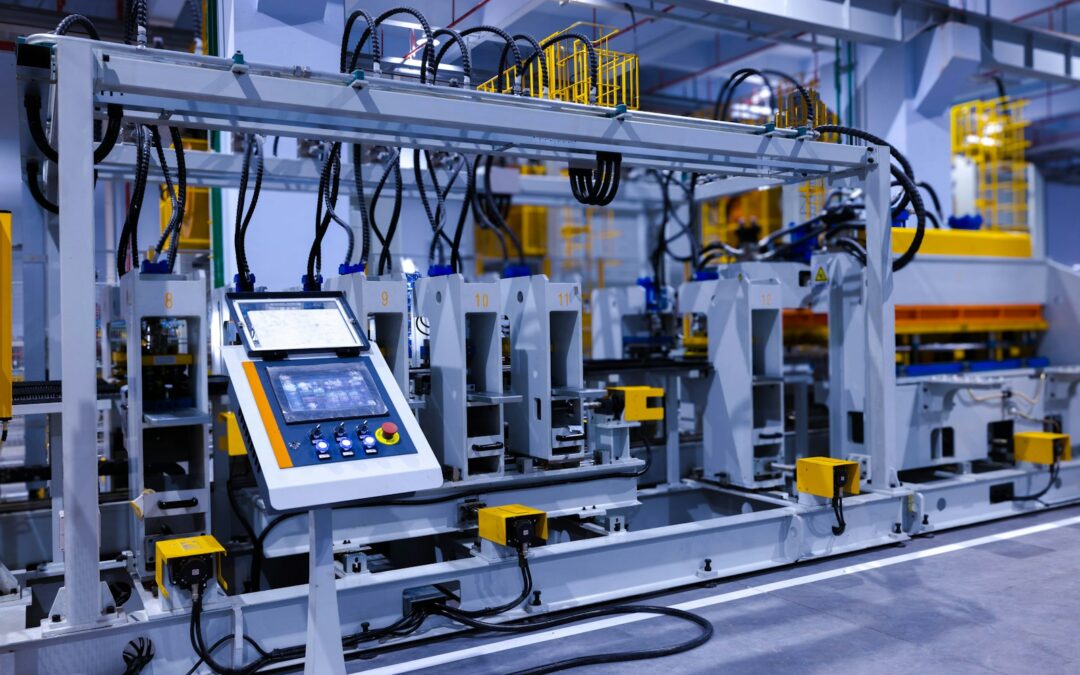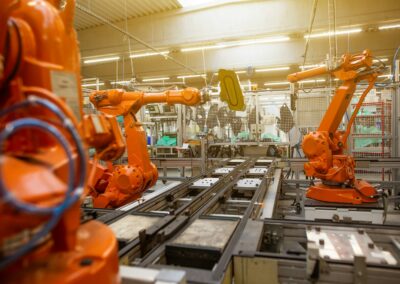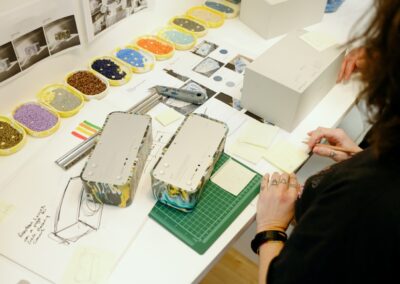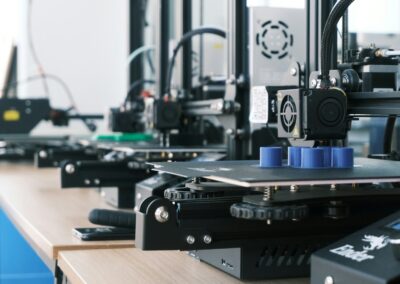Transforming Industrial Operations with Digital Twins
The Rise of Digital Twins in Manufacturing
The concept of digital twins in manufacturing has emerged as a transformative force, promising significant reductions in downtime and maintenance costs. A digital twin is a virtual representation of a physical asset, system, or process that can be used to simulate, predict, and optimize performance in real time. This technology is rapidly gaining traction in regions such as Saudi Arabia, the UAE, Riyadh, and Dubai, where industrial innovation and modernization are key strategic priorities.
Digital twins enable manufacturers to create a precise digital replica of their physical assets, which can be monitored and analyzed continuously. This real-time data collection and analysis provide valuable insights into the performance and condition of equipment, allowing for proactive maintenance and minimizing unexpected downtimes. By predicting potential failures and addressing them before they occur, digital twins help ensure that manufacturing operations run smoothly and efficiently.
The adoption of digital twins in manufacturing is particularly relevant for industries in technologically advanced regions like Dubai and Riyadh. These areas are known for their commitment to integrating modern technology into various sectors, and digital twins represent a significant step forward in achieving greater efficiency and productivity in manufacturing processes. The ability to reduce downtime and maintenance costs not only enhances operational efficiency but also contributes to overall business success and competitiveness.
Reducing Downtime with Predictive Maintenance
One of the most significant benefits of digital twins in manufacturing is their ability to reduce downtime through predictive maintenance. Traditional maintenance practices often rely on scheduled checks and reactive responses to equipment failures, which can be inefficient and costly. In contrast, digital twins enable a more proactive approach by continuously monitoring the health of machinery and predicting when maintenance is needed.
Predictive maintenance uses the data collected by digital twins to identify patterns and anomalies that indicate potential issues. By analyzing this data, manufacturers can predict when a machine is likely to fail and perform maintenance before the failure occurs. This approach not only prevents unexpected breakdowns but also extends the lifespan of equipment, leading to significant cost savings.
For business executives, mid-level managers, and entrepreneurs in regions like Saudi Arabia and the UAE, investing in digital twins and predictive maintenance technologies can yield substantial returns. Reduced downtime translates to increased production uptime, higher productivity, and ultimately, greater profitability. Additionally, the ability to predict and prevent equipment failures enhances overall operational reliability, which is critical for maintaining a competitive edge in the manufacturing industry.
Optimizing Maintenance Costs with Digital Twins
In addition to reducing downtime, digital twins play a crucial role in optimizing maintenance costs. Maintenance activities can be expensive, particularly when they are performed reactively or based on fixed schedules rather than actual equipment condition. Digital twins enable manufacturers to adopt a more data-driven approach to maintenance, focusing resources where they are needed most and avoiding unnecessary expenditures.
By providing real-time insights into equipment performance, digital twins allow for condition-based maintenance, which is more efficient and cost-effective than traditional methods. This approach ensures that maintenance is performed only when necessary, based on the actual condition of the equipment rather than arbitrary schedules. As a result, manufacturers can reduce the frequency and cost of maintenance activities while ensuring that their machinery operates at peak efficiency.
In high-tech regions such as Riyadh and Dubai, where industrial innovation is a key focus, the use of digital twins for optimizing maintenance costs aligns with broader goals of enhancing operational efficiency and sustainability. By leveraging advanced technologies to streamline maintenance processes, manufacturers can achieve significant cost savings and improve their bottom line. This, in turn, supports broader business objectives and contributes to long-term success in the competitive manufacturing sector.
Conclusion
The adoption of digital twins in manufacturing represents a significant leap forward in industrial operations, offering substantial benefits in terms of reducing downtime and optimizing maintenance costs. By creating precise digital replicas of physical assets, manufacturers can monitor and analyze equipment performance in real time, enabling predictive maintenance and data-driven decision-making. This proactive approach not only prevents unexpected failures but also extends the lifespan of machinery, leading to significant cost savings.
In regions like Saudi Arabia, the UAE, Riyadh, and Dubai, where technological innovation and modernization are key strategic priorities, the implementation of digital twins in manufacturing aligns with broader goals of enhancing efficiency, productivity, and competitiveness. Business executives, mid-level managers, and entrepreneurs who invest in digital twin technologies can expect to see significant returns in the form of increased uptime, reduced maintenance costs, and improved operational reliability.
As the manufacturing industry continues to evolve, the integration of digital twins will likely become more prevalent, driven by advancements in technology and growing recognition of their benefits. By embracing this innovative approach, manufacturers can position themselves at the forefront of industrial innovation, ensuring long-term success and competitiveness in a rapidly changing landscape.
#DigitalTwins #ManufacturingInnovation #PredictiveMaintenance #IndustrialEfficiency #SaudiArabia #UAE #Riyadh #Dubai #TechInManufacturing #BusinessSuccess #LeadershipSkills #ProjectManagement























